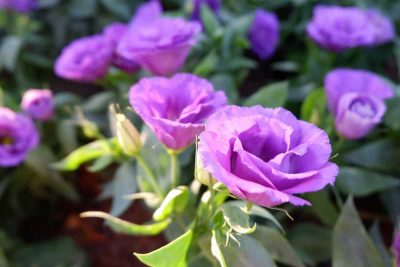Want stunning, long-lasting blooms but tired of plants that fade too quickly? Lisianthus might be your answer. With the right growing conditions, it rewards you with gorgeous flowers for weeks. Here’s how to make it thrive.
Few plants can brighten a garden like creeping phlox. With its carpets of colorful blooms and easygoing nature, it’s a favorite for gardeners of all levels. Here’s how to grow and care for it in your yard.
If you’re looking for a flower that practically guarantees color without a lot of fuss, zinnias are it. They’re low-maintenance, fast-growing, and perfect for cutting gardens. Let’s talk about how to keep them thriving.
Snapdragons are classic garden flowers for a reason—they’re hardy, colorful, and low-maintenance. If you’re ready to add them to your yard, here’s everything you need to know.
A splash of color out front can completely transform the look of your home. Small flowering trees are perfect for adding charm without overwhelming your space. Here are 20 beautiful options under 10 feet tall to boost your curb appeal.
The first time I planted sunflowers, I was shocked at how quickly they grew—and how much joy they brought to my backyard. If you’re ready to experience the same, here are some expert tips to get you started.
If you’ve got chickens roaming your yard, you already know they’ll peck at just about anything that looks tasty. The problem? Not every pretty flower is safe for them. In fact, some common garden blooms can be downright dangerous. Let’s take a look at 20 flowers you’ll want to keep far away from your flock.
You step outside in early September. The summer heat is finally letting up, but your yard still feels kind of empty. September is a great month to plant flowers like pansies, snapdragons, violas, and calendulas for a strong fall display. With a little planning, you can get a lot of color going fast.
There’s something about Hawaiian flowers that grabs your attention—bright, bold, full of life. But beyond the petals and colors, there’s rich meaning, tradition, and story. If you’ve ever wanted to go deeper than just “that one looks nice,” this is your floral crash course about Hawaiina flowers.
A new season approaches, but your garden still calls for color. August’s warm days work magic on certain flowers. Plant any of these 25 varieties for a garden that keeps shining into the next season.
If you love growing flowers and raising chickens, you might wonder which blooms are safe for your feathered friends. Not all garden favorites are harmless for hens, but plenty add color to your yard without worry. Here are 20 beautiful flowers you can grow confidently around your flock.
Fragrance often sets truly remarkable roses apart from the rest. Some varieties captivate with rich scents that linger in the air and create lasting memories in the garden. This article presents 20 stunning fragrant roses, each chosen for both visual beauty and unforgettable aroma.











